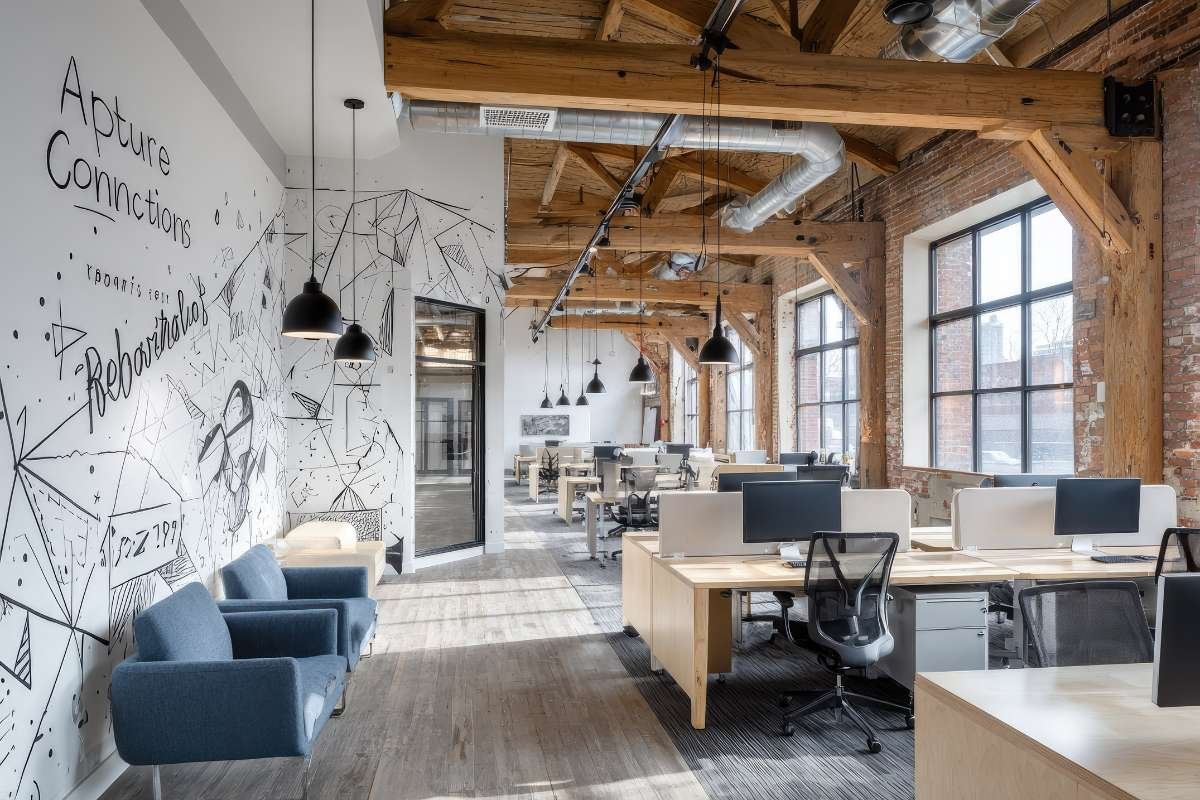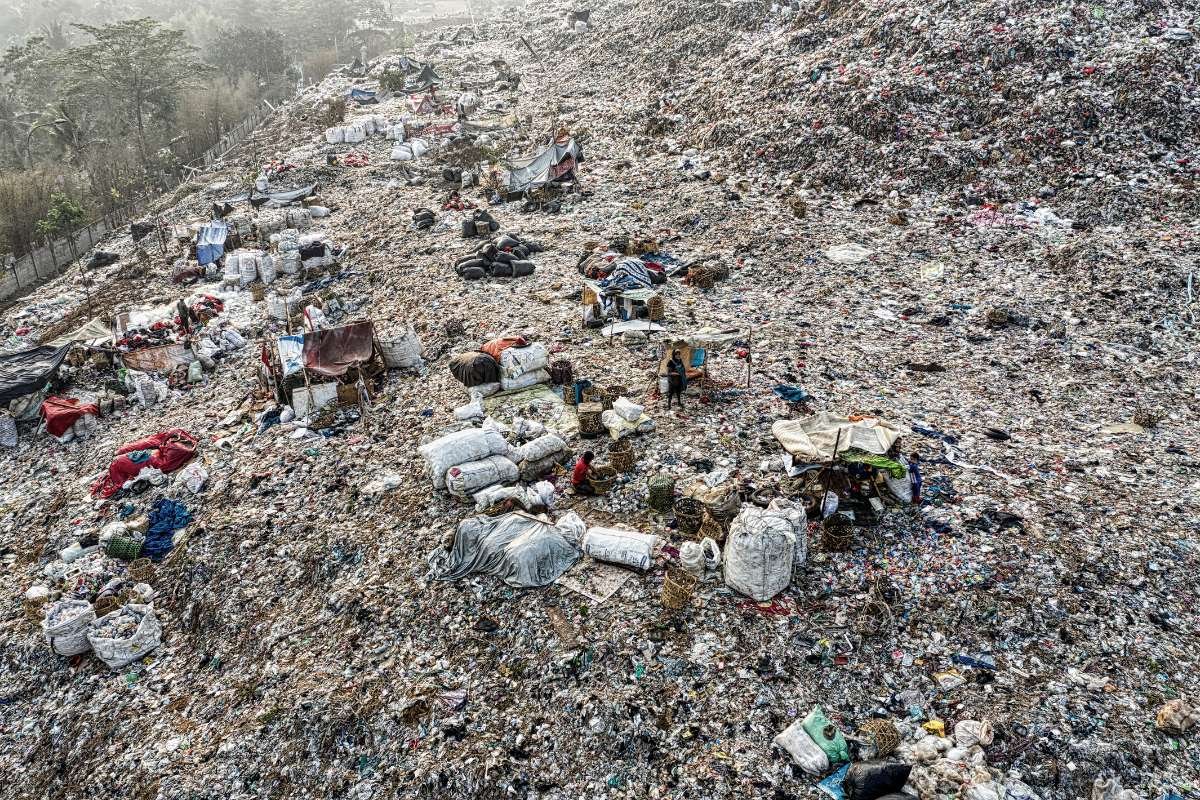Software has often dominated the conversation around sustainable logistics in the UK and Europe in the past decade. From AI-driven routing to blockchain-enabled transparency, the focus has leaned heavily towards digital optimisation.
Yet as carbon commitments tighten and operational pressures intensify, many operators are starting to confront a quieter reality: no amount of software will deliver lasting change if the physical backbone of the network remains inefficient.
Across hubs like the Port of Felixstowe and the Midlands logistics triangle, warehouses are already operating at the edge of their capacity. Congestion at major gateways such as Southampton and Dover is intensifying. Unpredictable ferry schedules and rail freight capacity limits are adding more pressure back into inland distribution centres.
Driver shortages are now a persistent issue across the UK, adding further complexity and increasing the cost of every inefficiency in loading, storage, or asset management.
Infrastructure built for a slower, more predictable era now has to handle complex flows, tighter emissions regulations, and heightened customer expectations.
For fast-growing companies, the priority is not only scaling technology but re-engineering the physical assets that move and store goods. Here, the role of the UK-based reusable storage solution providers becomes more than an operational choice; it is a strategic lever for both cost control and sustainability.
From Carbon Pledges to Container Strategies
Over the past five years, carbon reduction pledges have moved from corporate social responsibility pages to core business strategies. The EU Green Deal, the UK’s legally binding net-zero target, and tightening Scope 3 reporting requirements mean logistics teams can no longer rely on efficiency gains alone.
The infrastructure itself has to contribute to lower emissions. A recent industry analysis on sustainable supply chains noted that up to 60 per cent of a network’s carbon footprint can be tied directly to its physical assets and modes of transport.
This includes the energy used in warehouses, the fuel efficiency of vehicles, and the materials used in packaging and pallets. While electrification and renewable energy adoption are part of the solution, the choice of containers, racks, and transport units can have an equally significant impact.
Policy measures are reinforcing this shift. From 2025, the UK Plastic Packaging Tax will extend its reach to cover a broader range of materials, encouraging businesses to invest in longer-life solutions.
Urban consolidation centres, now piloted in London, Bristol, and Oxford, are imposing stricter standards on the types of transport and containers allowed, further incentivising reusable, standardised systems.
Corporate buyers are responding by factoring ESG performance into tender scoring. In procurement processes for major retailers and manufacturers, physical infrastructure choices now influence contract eligibility.
A supplier able to demonstrate reduced waste, standardised reusable assets, and alignment with customer sustainability targets will have a stronger position when competing for contracts. Industry research on the potential impact of reusable packaging highlights how such systems can cut emissions, lower lifetime costs, and improve procurement competitiveness. One example is the transition from single-use wooden pallets to reusable units made from recycled polymers.
Beyond reducing waste, these systems can be designed for decades of use, with lower maintenance and lighter weight, which cuts vehicle emissions. They also enable closed-loop logistics, where assets are retrieved, refurbished, and redeployed rather than discarded. UK grocery distribution networks are trialling this approach, as high-frequency deliveries require assets that can withstand repeated handling and maintain strict hygiene standards.
Why Infrastructure, Not Just Data, Is the Next Frontier?

The sustainable logistics sector has invested heavily in data integration over the past decade. Warehouse management systems now offer minute-by-minute inventory visibility, predictive analytics help smooth seasonal peaks, and transport platforms automatically adjust routes in real time.
Yet in many facilities, these advanced systems still manage workflows around ageing, incompatible physical infrastructure. Consider a warehouse in the East Midlands designed in the 1990s for palletised bulk goods.
Even with the best-in-class software, it will struggle to match the efficiency of a modern modular facility optimised for omnichannel fulfilment. The physical configuration determines how quickly goods can be received, stored, and dispatched.
It also dictates energy use: narrow-aisle racking, for instance, allows for more goods per square metre, which reduces heating and lighting demands. The disconnect between the digital and physical layers is particularly visible in last-mile delivery hubs.
Many urban depots are housed in repurposed buildings that were never designed for high-frequency vehicle movements or automated loading equipment. Software can optimise routes, but if the loading bays are too narrow or the floor layout causes bottlenecks, the operational gains will be limited.
Another overlooked issue is automation readiness. Many businesses invest in automated guided vehicles (AGVs) or robotic picking systems, only to find their existing pallets, containers, or shelving units are incompatible with the new machinery. This mismatch often leads to costly retrofits or forces automation projects to operate below capacity.
Future-ready infrastructure must be designed with compatibility in mind. This ensures that physical assets do not become the limiting factor for digital advancements. Sustainable logistics transformation requires synchronising these layers. This means matching software upgrades with corresponding investments in adaptable, reusable infrastructure.
For SMEs, the challenge is finding assets that can flex with the business without locking them into costly, inflexible systems. Flexible racking, modular loading docks, and reusable transport units form the physical framework on which software optimisation can deliver its full potential.
Plastic Pallets and Modular Warehousing: Solving Both Cost and Emissions
In this context, plastic pallets have emerged as more than just a material swap. When designed for reuse, they offer predictable sizing, resistance to moisture, and compatibility with automated handling equipment. Their uniformity reduces loading errors, minimises product damage, and accelerates turnaround times.
Unlike wooden pallets, they do not shed splinters or absorb spills, which improves hygiene and reduces cleaning requirements. From a sustainability perspective, the benefit is twofold. First, high-quality plastic pallets can last for hundreds of cycles, spreading the manufacturing carbon footprint over years of use.
Second, at the end of life, they can be recycled into new pallets or other industrial products, closing the material loop. Several regional distribution centres in the UK have begun pooling these pallets between suppliers, retailers, and sustainable logistics providers, reducing duplication and maximising utilisation.
Life cycle cost analysis reinforces the business case. While initial purchase costs are higher, other factors help balance the investment. Reduced replacement frequency, lower damage rates, and minimal repair needs mean that the total cost of ownership can be significantly lower over a five-to-seven-year period.
This is before factoring in the reduced waste management costs and improved sustainability reporting. Modular warehousing takes this logic further. Instead of fixed racking layouts, operators are deploying reconfigurable systems that can be adjusted as product mixes change.
This is particularly valuable for mid-market firms whose inventory profiles can shift dramatically within a few years. Combining modular systems with reusable transport assets creates a more resilient, resource-efficient backbone.
In a Northamptonshire fulfilment centre serving multiple e-commerce brands, the introduction of modular racking allowed operators to repurpose storage zones for seasonal product surges. This reduced the need for temporary offsite storage and cut inter-facility transfers by 18 per cent, translating into measurable cost and emissions savings.
Reusability and Closed-Loop Logistics in UK SME Operations

For SMEs, capital expenditure is always a balancing act. Investing in durable, reusable assets can feel counterintuitive when cheaper, disposable options are available. However, closed-loop logistics models are changing the equation. Industry research on closed-loop supply chain strategies highlights how reusing assets can cut raw material and waste-disposal costs while improving cost predictability. By retrieving and reusing assets, companies not only reduce waste but also create more dependable operating costs.
Take the example of a Manchester-based food wholesaler supplying independent restaurants across the North West. By shifting to a closed-loop system using reusable crates and pallets, they reduced their annual packaging spend by 30 per cent and cut their landfill contributions by more than half.
Crucially, these assets were integrated into the company’s existing delivery routes, so retrieval required no additional fuel or labour. In another case, a Scottish seafood exporter operating from Peterhead port replaced polystyrene boxes with insulated reusable containers.
The switch improved product shelf life during transport, reduced packaging waste by 80 tonnes annually, and strengthened the company’s environmental credentials in key European markets. By coordinating container returns with existing inbound logistics from suppliers, they avoided additional journeys and associated emissions.
A pharmaceutical distributor in Hertfordshire has applied similar principles to temperature-controlled logistics. By using reusable insulated containers equipped with smart temperature trackers, the company reduced single-use packaging by 70 per cent and gained more accurate compliance records for regulatory audits.
Asset pooling and reusability are now recognised as key enablers for sustainable supply chains, particularly in urban and peri-urban contexts. For SMEs, the advantage lies in scalability: reusable systems can be expanded or contracted without the step-changes in cost that come with building new facilities or replacing large volumes of single-use packaging.
Risk Reduction Through Standardised Systems
Standardisation may sound like an operational detail, but in sustainable logistics it has strategic implications. When assets share common dimensions, load capacities, and handling specifications, the risk of bottlenecks and compatibility issues falls sharply.
Standardisation also enables more effective collaboration between partners in a supply chain, since equipment can be shared or substituted without disruption.
A contamination incident in a food distribution network can trigger quarantines and halt production lines downstream. Standardised, easily sanitised assets reduce this risk. They also support compliance with tightening hygiene and traceability requirements in sectors from pharmaceuticals to electronics.
Several UK retail consortia have agreed on shared specifications for reusable transport assets to ensure compatibility across multiple suppliers. For mid-market operators, aligning with such standards can open new contract opportunities, since buyers increasingly prefer partners who can integrate seamlessly into their networks.
Standardisation also strengthens resilience in times of disruption. Research on standardisation of products and procedures shows that having interchangeable systems increases sourcing flexibility and reduces dependency on single suppliers.
During the pandemic, companies with interchangeable pallet and crate systems were able to source equipment from multiple suppliers, avoiding the bottlenecks that hit operators reliant on bespoke or imported units.
International trade trends are reinforcing this. As more UK firms integrate into pan-European logistics networks, compatibility with continental pallet and container standards is becoming essential. This is particularly relevant for exporters in food, pharmaceuticals, and high-value manufacturing, where cross-border supply chain delays can be costly.
A New Generation of Suppliers: Balancing Cost, Carbon, and Convenience

This shift towards smarter physical infrastructure is giving rise to a new class of suppliers. These companies are not just selling pallets, crates, or racking; they are offering integrated systems that combine durability, adaptability, and sustainability.
UK-based modular platforms are helping SMEs bridge the gap between cost-efficiency and environmental responsibility, enabling them to compete with larger rivals without over-extending their capital. For procurement teams, this has changed the nature of supplier relationships. Rebox Storage helps UK SMEs operationalise reusable, modular infrastructure without hype or lock-in.
Instead of buying assets outright and managing their maintenance in-house, many companies are entering into service-based agreements where the supplier retains ownership, handles refurbishment, and ensures compliance with relevant standards. This shifts costs from capital expenditure to operating expenditure, freeing up resources for other investments.
The emphasis is on long-life assets that fit into circular models, supported by retrieval, refurbishment, and recycling services. McKinsey’s research on moving from a linear to a circular system highlights the economic and resilience dividends of reusing resources, making it a strategic safeguard against future costs and scarcity.
By building these capabilities into their offerings, suppliers help clients reduce exposure to future carbon taxes and landfill levies. They also protect against the risk of resource shortages.
Risk management is a growing factor in supplier selection. Businesses are increasingly assessing not just the asset itself, but the stability of the supply partner, their ability to maintain consistent quality, and their resilience in the face of material shortages or geopolitical disruptions.
This is prompting longer-term contracts and co-investment models. It is also encouraging collaborative innovation projects that tie infrastructure suppliers more closely into their clients’ strategic planning. For sustainable logistics directors, the decision is no longer between cost and sustainability.
The most competitive infrastructure solutions are those that deliver on both cost and sustainability. They also improve operational agility. The rise of these suppliers also signals a broader cultural shift in the sector, where physical infrastructure is seen not as a static purchase but as a managed, evolving asset base.
Final Thoughts
The conversation about sustainable logistics often starts with technology, but the proof of change is in the physical assets that touch every product. From the containers that move goods to the racking that stores them, infrastructure choices determine not only how efficient a supply chain can be but how resilient it will remain under regulatory, environmental, and market pressures.
The way these assets are specified, sourced, and maintained will shape operational performance for years to come. For the UK and European logistics sectors, smarter, reusable, and modular physical infrastructure offers a route to cutting carbon, controlling costs, and enhancing throughput.
The companies that recognise this and act on it will find themselves better positioned to deliver on both their ESG commitments and their commercial goals. Those that delay risk being locked into outdated systems that cannot meet evolving customer demands or regulatory thresholds.
Looking ahead to 2030, the operators most likely to thrive will be those that integrate sustainability into every layer of their network, not just in reporting metrics but in the actual materials, designs, and lifecycles of the assets they depend on.
This will require more collaboration between suppliers, sustainable logistics providers, and policymakers to ensure infrastructure decisions support both commercial growth and environmental goals. As policy frameworks tighten, customer expectations rise, and resource constraints deepen, the ability to adapt infrastructure quickly and sustainably will separate leaders from laggards.
The next leap in sustainable logistics will not come solely from algorithms or dashboards. It will come from the ground up, in the form of assets built to last, designed to adapt, and ready to be reused, tangible, enduring proof that sustainability is more than a strategic statement; it is a daily operational reality. By treating physical infrastructure as a strategic, adaptable asset, the sector can turn sustainability from an ambition into a measurable, everyday achievement.


















